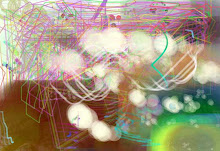
1. What is a tessellation?
Tessellation is form of art that represents animals or other living things in a mosaic floor that doesn’t overlap, has no space in between each tile, and is put symmetrical to the floor or a plane.
2. Write a couple of paragraphs describing the life and work of M.C. Escher. Pick out important facts that describe who he is, how he worked, and why he is famous.
M.C. Escher was born in Leeuwarden, Holland on June 17th, 1898. His family moved to Arnhem, and he went to a high school there. His art teacher in high school taught him linocuts, linocuts is a printmaking technique; and because he was talented at it, he was sent to one of the best graphic artists named Roland Holtz. He suggested that he try it with wood, but since he failed his school exam, Holtz suggested that he became an architect. From 1918 to 1922, Escher studied in the School for Architecture and Decorative Arts in Haarlem. He became close friends with his teacher, Mesquita who was later sent to concentration camp. And Escher developed his skills in woodcutting.
In 1922, he took a boat trip to Alhambra, Spain, which influenced him with many tiling patterns. He also visited Italy, and he met Jetta, who was to be his future wife. They got married and stayed mostly in Rome until 1938. During this time, he traveled around the southern coastline, and many of his landscape were influenced by it, like the Castrovalva. In 1925, he created his first tessellation, which is called Lions. It was not very successful. In 1937, his brother helped him out with wallpaper designs that were created by George Pólya. Professor F. Hagg also influenced him in developing the Layman’s Theory. He created about 137 tessellation designs before his death. His last tessellation was solution that he solved to a puzzle given to him by a mathematician names Roger Penrose.

No comments:
Post a Comment